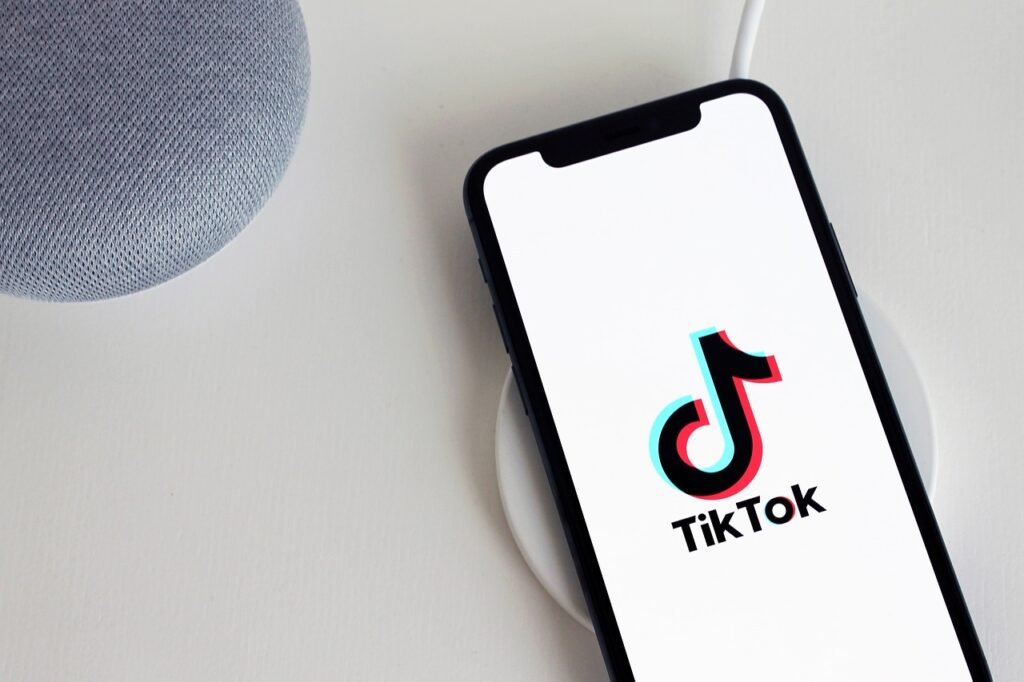Navigating the realm of Facebook advertising can feel like an expedition through a dense jungle. Retargeting is one such technique that, when wielded correctly, can act like a beacon, pulling lost visitors back towards your brand.
With over 2.8 billion monthly active users, Facebook is a treasure trove of potential customers. In this guide, we’ll unravel the complexities of retargeting these users, ensuring that missed opportunities become successful conversions.

Understanding Facebook Pixel
The Facebook Pixel is a minute piece of code, but its impact is monumental. Acting as the bridge between your website and Facebook Ads, it captures user interactions on your site, feeding this data back to Facebook. This data becomes the cornerstone of your retargeting campaigns, allowing you to reach users who’ve already shown interest in your brand or product.
Installation basics: How and where to place the Pixel on your website
Integrating the Pixel into your site might sound tech-heavy, but it’s surprisingly straightforward. Within Facebook’s Ad Manager, you’ll find the option to generate your Pixel code. Once generated, this code needs embedding in the header section of your website, ensuring it loads on every page.
And, here’s how to install Facebook Pixel on WordPress –
Verifying the Pixel and addressing common installation issues
After installation, it’s vital to ensure the Pixel is firing correctly. Tools like Facebook’s Pixel Helper can diagnose and troubleshoot common hiccups. Some frequent issues include multiple Pixel fires, or the Pixel not loading correctly due to website code conflicts.

Setting Up Custom Audiences for Retargeting
To extract maximum value from your Facebook retargeting efforts, you must master the art of creating custom audiences. Think of Facebook Ads Manager as your control center.
Here, you can delve into the ‘Audiences’ section, initiating the process of crafting specific user groups based on their interactions with your site, thanks to the data captured by the Pixel.
Segmentation options: Duration of website visit, specific page views, purchase actions, etc.
The beauty of retargeting on Facebook is the granularity it offers. Do you wish to target users who lingered on a product page for over 5 minutes but didn’t purchase? Or perhaps those who abandoned their shopping carts? The possibilities are endless.
Properly segmenting audiences based on behaviors like page views, session durations, and conversion actions ensures that your ads resonate more personally with each user, increasing the probability of re-engagement.
Best practices to segment and organize audiences for different campaign objectives
Retargeting is not a one-size-fits-all approach. Depending on your campaign objectives – be it brand awareness, lead generation, or sales conversion – your audience segments will vary. A balanced strategy involves a mix of broad and narrow segments.
While broader segments help keep the brand top-of-mind, narrower ones, like targeting cart abandoners, can drive direct conversions. Organizing these segments with clear naming conventions in Ads Manager will streamline campaign management and optimization.

Designing Effective Retargeting Ads
Facebook boasts a plethora of ad formats, each with its unique charm. Carousel ads, with their swipe-through feature, are great for showcasing a product range. Videos can tell compelling brand stories, while slideshows serve as lightweight video alternatives.
Dynamic ads, though, are the crown jewels for retargeting. They automatically showcase products that users have previously interacted with, making them highly relevant and increasing the chance of conversion.
Crafting a persuasive ad copy: Importance of message relevance
While visuals captivate, it’s the ad copy that persuades. Retargeted users are already familiar with your brand, so the messaging needs to be direct and relevant. Remind them of what they viewed, offer incentives, or highlight USPs. A well-crafted copy complements visuals and nudges users towards the desired action.
Tips for using engaging visuals and maintaining brand consistency
Visual consistency reinforces brand recall. Ensure that the visuals used in retargeting ads echo the aesthetics of your website. This creates a seamless experience for the user. High-quality images, consistent color schemes, and recognizable logos amplify the effectiveness of retargeted ads.
Allocating Budget and Deciding Bidding Strategy
Facebook’s ad ecosystem operates on an auction system. But it’s not just the highest bidder that wins; it’s a delicate dance of bid amount, ad relevance, and estimated action rates.
Essentially, when you place an ad, Facebook evaluates its potential value to the user against competing ads, determining its visibility. Grasping this mechanism is key. It ensures you’re not just throwing money blindly, but investing it where it counts.
Deciding between daily budget vs. lifetime budget
Budget decisions significantly influence your retargeting campaign’s reach and longevity. Opt for a daily budget if you prefer spreading ad displays evenly throughout a day. It offers consistent brand visibility, ideal for evergreen campaigns.
On the other hand, a lifetime budget is set for the campaign’s entire duration. Facebook’s algorithm optimizes the ad display based on user activity, ensuring you get the most bang for your buck during peak engagement times.
Cost models: CPC vs. CPM – Which one to choose?
CPC (Cost Per Click) and CPM (Cost Per Thousand Impressions) are the dominant billing modes. With CPC, you’re billed for each click your ad receives, making it suitable when driving website traffic is the goal. CPM, conversely, charges for every thousand views your ad garners.
This is beneficial for brand visibility campaigns, especially when high engagement is anticipated. The choice between CPC and CPM should align with your campaign objectives and anticipated audience response.
Advanced Retargeting Strategies on Facebook
Dynamic Product Ads are Facebook’s answer to highly personalized retargeting. By utilizing user data from their site interactions, DPAs showcase the exact or related products they viewed. Say, a user browsed a pair of sneakers on your website.
With DPA, that specific pair (or related items) will appear in their Facebook feed, significantly ramping up the conversion potential.
Sequence retargeting: Serving ads in a specific order to nurture leads
Retargeting isn’t just about showing past products; it’s a narrative tool. Sequence retargeting strategically serves ads in a predetermined order. For instance, first, a brand story video, followed by a product showcase, and finally, a compelling offer. It’s storytelling, guiding the user through a journey from brand introduction to purchase.
Excluding certain audiences: Avoiding ad fatigue and reaching new prospects
Repeatedly bombarding users with the same ad leads to ad fatigue, decreasing engagement. An astute strategy involves excluding users who’ve already converted or shown consistent disinterest. This ensures your ads remain fresh, targeting newer audiences or re-engaging past visitors with different content.

A/B Testing Retargeted Campaigns
In the constantly evolving digital landscape, data-driven decisions reign supreme. A/B testing, or split testing, is a method to compare two versions of an ad to determine which performs better in terms of engagement or conversions.
In Facebook Ad Manager, setting up a split test is straightforward. Begin by selecting your campaign objective, then choose the “Split Test” option and define the variable you wish to test, be it audiences, placements, or ad designs.
Common variables to test: Imagery, ad copy, CTA buttons, and ad placement
While myriad elements can be A/B tested, focusing on key variables often yields actionable insights. Imagery, especially the main ad visual, significantly influences user engagement. Testing different images can unveil what resonates most with your audience. Similarly, tweaking ad copies, CTAs, and even ad placements can unravel specific user preferences, refining your retargeting approach.
Understanding test results and refining strategies accordingly
Once your A/B test concludes, analyzing the results is paramount. Facebook Ad Manager provides detailed metrics, spotlighting the variant that outperformed the other. But remember, this isn’t about declaring a winner and forgetting the loser. It’s about understanding user behavior, assimilating insights, and iteratively refining your campaigns for optimal outcomes.

Monitoring Retargeting Campaign Performance
Monitoring is the compass guiding your retargeting voyage. Key metrics like the conversion rate illustrate the percentage of users who took the desired action. ROAS provides a clear picture of the financial efficacy of your campaign, highlighting the return on each dollar spent.
Lastly, ‘Frequency’ indicates how often an average user sees your ad. Keeping a tab on these metrics ensures your campaigns remain on track, generating favorable ROI.
Using Facebook Analytics for deeper insights
While Ad Manager offers a plethora of data, delving deeper with Facebook Analytics is recommended. It uncovers user pathways, demographic insights, and even cross-device usage patterns. Such granular data can be instrumental in shaping broader marketing strategies beyond mere retargeting.
Real-time adjustments: When to scale or stop a retargeting campaign
The digital realm’s beauty lies in its fluidity. Unlike traditional marketing, you’re not set in stone after launching a campaign. Real-time monitoring allows for dynamic adjustments. If a campaign segment shows exceptional promise, scaling becomes a possibility.
Conversely, underperforming segments might need halting or revamping.
Combining Retargeting with Facebook Lookalike Audiences
When you’ve identified an audience that interacts positively with your brand, wouldn’t it be ideal to find more people just like them? This is where Facebook’s Lookalike Audience comes into play. It identifies Facebook users who share similar behaviors, interests, and demographics with your best-performing audience segments. By combining retargeting with Lookalike Audiences, you’re not just re-engaging previous website visitors but also reaching out to new potential customers who are likely to be interested in your offerings.
Setting up a Lookalike Audience based on website visitors
Initiating a Lookalike Audience begins in the ‘Audiences’ section of the Facebook Ads Manager. Choose the source of your audience – in this case, website visitors or a particular segment of them. Next, define the target country and the percentage of similarity you want.
A smaller percentage (e.g., 1%) means the audience will closely resemble your source, while a larger percentage expands the reach but decreases similarity.
Balancing retargeting and broad outreach for a comprehensive marketing approach
For a comprehensive marketing strategy, it’s imperative to strike a balance. While retargeting focuses on re-engaging past visitors, Lookalike Audiences help in broadening your horizon. By synergizing both, you ensure that while nurturing existing prospects, you’re also consistently filling the top of your sales funnel with potential new leads.
Addressing Potential Challenges
Ad blindness, or ‘banner blindness’, refers to users subconsciously ignoring ad-like information. Coupled with ad fatigue, where users get tired of seeing the same ads, this can hinder retargeting efforts. Rotate ad creatives frequently and ensure they resonate with the target segment. Using varying formats and introducing fresh content can revitalize user engagement.
Privacy concerns, cookie consents, and GDPR implications
In an era emphasizing digital privacy, adhering to regulations is non-negotiable. Always ensure your website has clear cookie consent mechanisms and fully complies with GDPR or regional data protection laws. Transparently communicate how user data is utilized and respect opt-out requests promptly.
Resolving Pixel-related issues and discrepancies in data
Occasionally, the Facebook Pixel might misbehave. Regularly verify its functionality. Discrepancies, often stemming from browser cookie settings or ad blockers, need addressing. Utilizing Facebook’s Pixel Helper can diagnose issues, ensuring smooth data flow for precise retargeting.
Best Practices for Facebook Retargeting
In the world of retargeting, more doesn’t always mean merrier. Bombarding users with the same ad can lead to annoyance and decreased engagement. Frequency capping is a feature that allows you to set a limit on how often a user sees your ad within a specific timeframe. By keeping a tab on this, you ensure your retargeted ads remain effective and aren’t perceived as intrusive.
The importance of mobile optimization for retargeting ads
With a significant chunk of Facebook users accessing the platform via mobile devices, mobile optimization isn’t just good-to-have—it’s essential. Ensure that your retargeted ads are designed for mobile viewing.
This includes concise ad copy, clear calls-to-action, and mobile-responsive landing pages. A smooth mobile experience can significantly enhance the conversion rates of your retargeted campaigns.
Continuous learning through community resources, webinars, and Facebook Blueprint
Facebook’s advertising landscape is ever-evolving. To remain at the forefront, continuous learning is pivotal. Engage in Facebook community forums, partake in webinars, and consider Facebook Blueprint — the platform’s official e-learning module. These resources can provide insights, answer specific queries, and keep you updated on the latest best practices.
Wrapping it up
Retargeting website visitors on Facebook is more than just re-displaying ads; it’s about re-engaging potential customers, understanding their journey, and guiding them back into the sales funnel. This comprehensive guide has walked you through the intricacies of setting up, optimizing, and refining your retargeting campaigns. But remember, the digital marketing landscape is dynamic.
Stay adaptive, keep learning, and always prioritize the user experience above all. As you combine the power of retargeting with Facebook’s vast user base and advanced targeting capabilities, you’re setting your brand up for amplified success and deeper customer relationships.
Read Next:
- How to Utilize Dynamic Content in Email Campaigns
- How to Use Google Trends for Keyword Research
- SEO vs. PPC: Which Brings in More Traffic and Leads?
- 21+ Ways Chatbots can Skyrocket Lead Generation and Conversions
- How to use Surveys and Feedback for CRO






















Comments are closed.